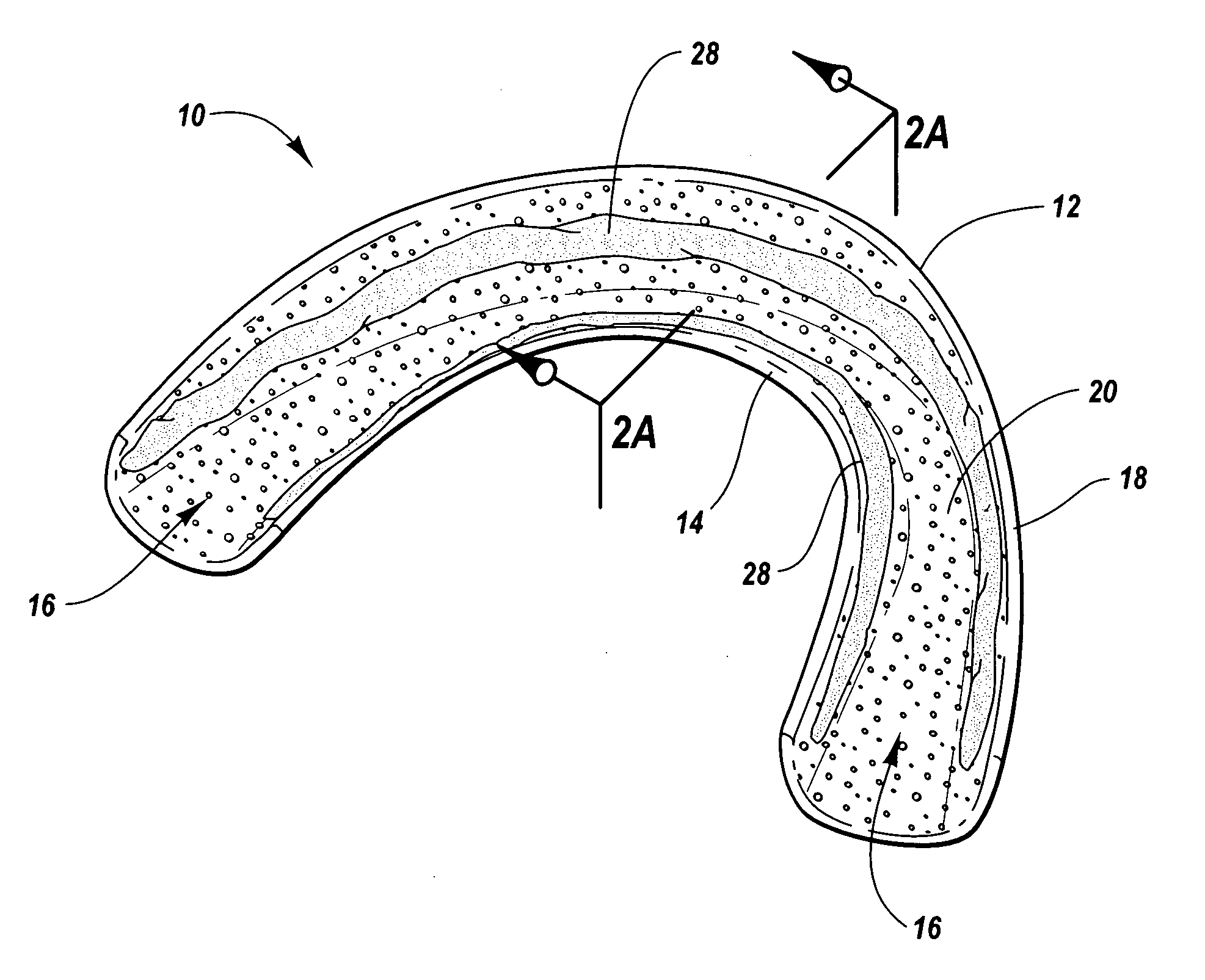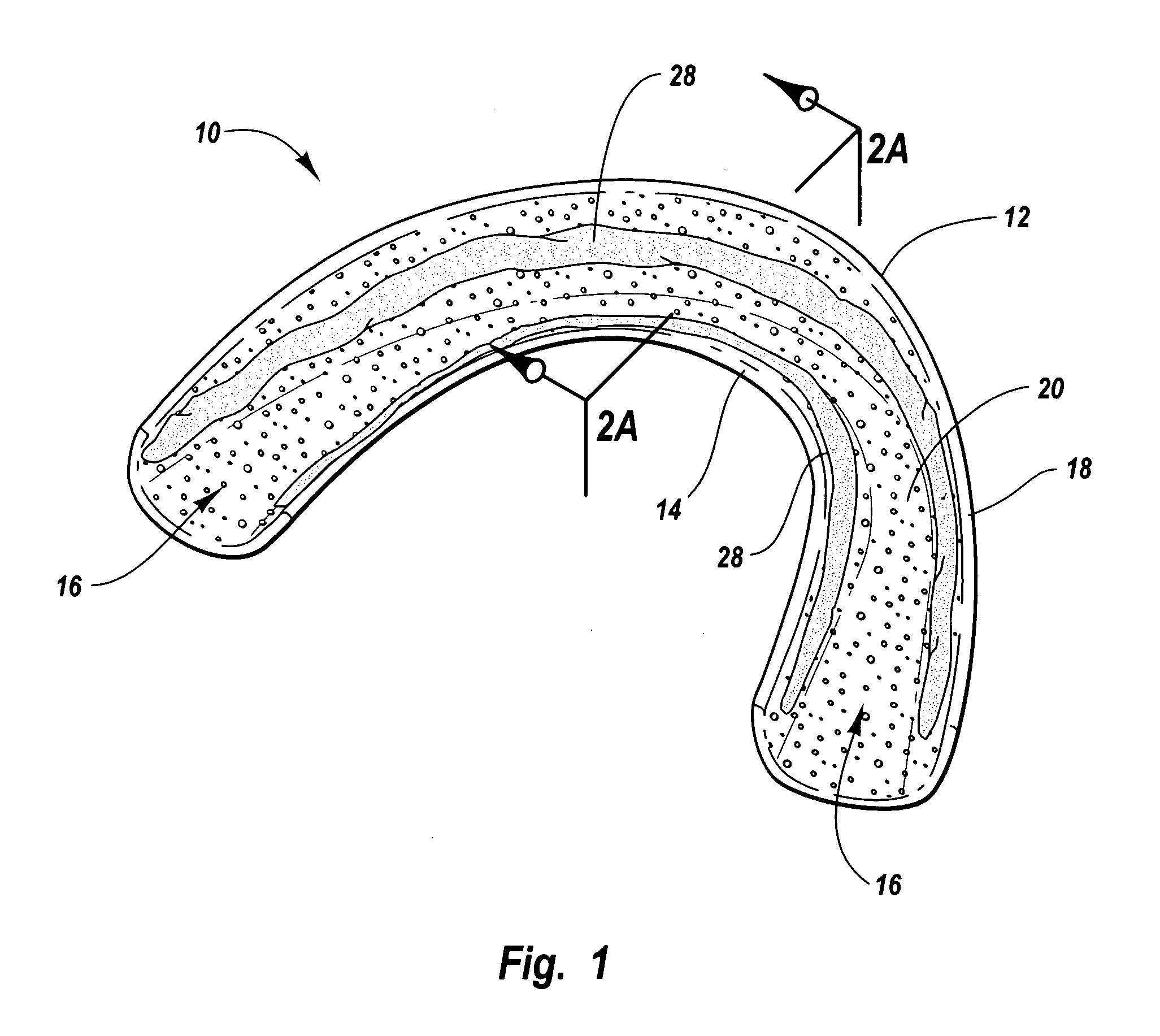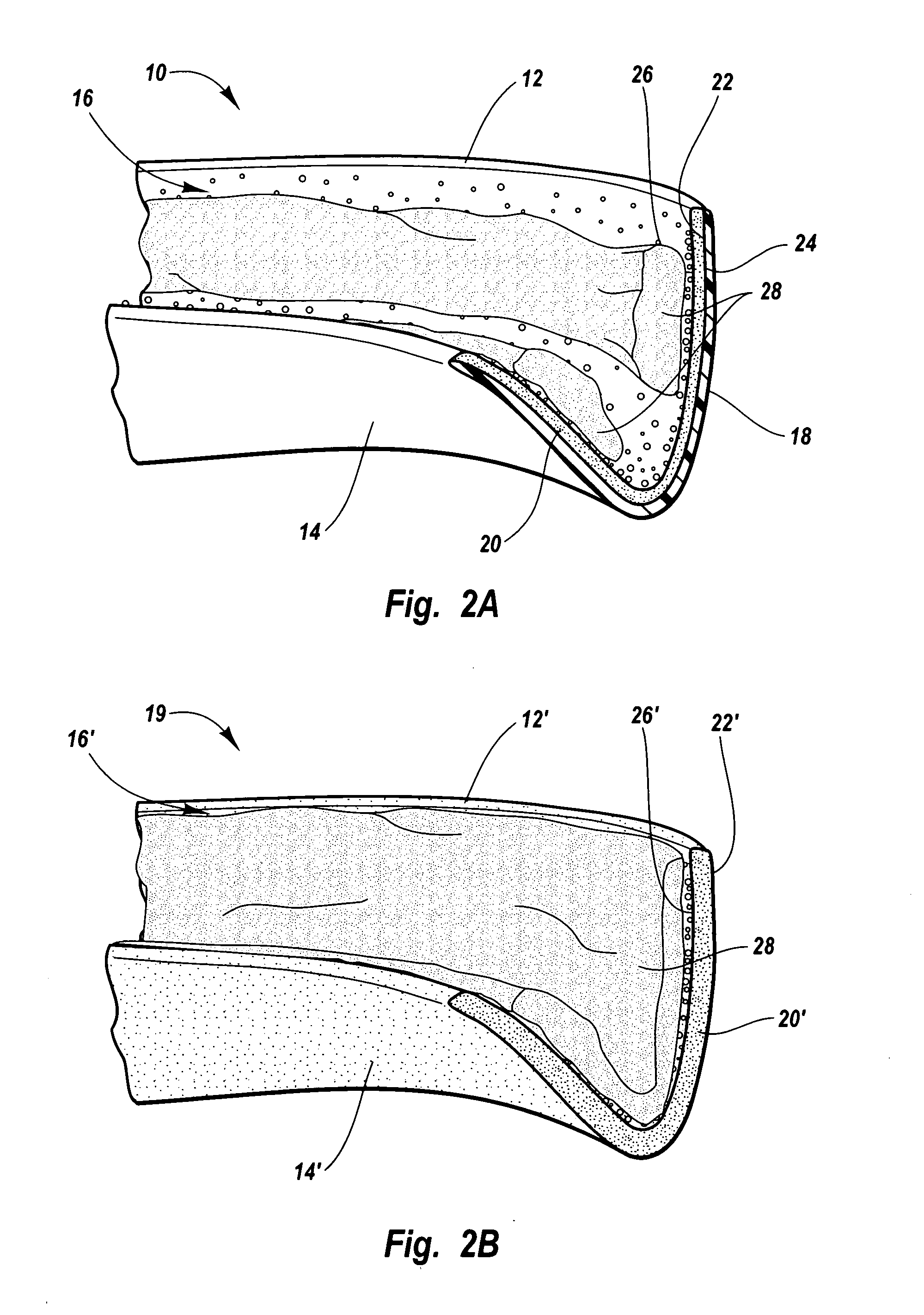Bleaching compositions and devices having a solid adhesive layer and bleaching gel adjacent thereto
a technology of composition and bleaching gel, which is applied in the field devices, can solve the problems of many alternatives having substantial disadvantages, time-consuming custom-made tray, and high cost of tray, and achieve the effect of convenient conformation, reducing the required bleaching time, and facilitating the ability of dental bleaching compositions or devices
- Summary
- Abstract
- Description
- Claims
- Application Information
AI Technical Summary
Benefits of technology
Problems solved by technology
Method used
Image
Examples
example 1
[0141] An initially flowable intermediate composition suitable for use in manufacturing a substantially solid, cohesive, and non-flowable dental bleaching layer was formed by mixing together the following components:
Carbamide Peroxide16%Polyvinyl pyrrolidone (M.W. = 1.3 million)38%Water46%
[0142] The resulting intermediate composition was spread over the surfaces of three types of flexible polymer sheets: polyethylene sheets having a thickness of approximately 0.15 to 0.18 mm; sheets made of paraffin having a thickness of approximately 0.05 to 0.08 mm; and MYLAR sheets having a thickness of approximately 0.38 mm. The composition was spread using a spatula. The coated sheets were heated in a forced air oven heated to a temperature of 50-70° C. for approximately 1 hour. The coated sheets were removed from the oven and inspected. The intermediate composition had dried sufficiently so as to form a solid, coherent bleaching layer on the surface of the polymer sheets. The dried bleaching...
example 2
[0147] An initially flowable intermediate composition suitable for use in manufacturing a substantially solid, cohesive, and non-flowable dental bleaching layer was formed by mixing together the following components:
Carbamide Peroxide16%PolyOx WSR 101 (M.W. = 1 million) 7%Water77%
[0148] The resulting intermediate composition was spread over the surface of MYLAR sheets using a spatula. The coated sheets were heated in a forced air oven heated to a temperature of 50-70° C. for approximately 1 hour. The coated sheets were removed from the oven and inspected. The intermediate composition had dried sufficiently so as to form a solid, coherent bleaching layer on the surface of the polymer sheets. Unlike the bleaching layer of Example 1, the bleaching layer of Example 2 did not adhere strongly to the polymer sheets but was easily separated therefrom. The coated sheets were placed back into the oven overnight.
[0149] The coated sheets were removed from the oven a second time, cut apart in...
example 3
[0152] An initially flowable intermediate composition suitable for use in manufacturing a substantially solid, cohesive, and non-flowable dental bleaching layer was formed by mixing together the following components:
Carbamide Peroxide16%Carbopol 974P 5%Aqueous NaOH (50%) 6%Water73%
[0153] The resulting intermediate composition was spread over the surface of MYLAR sheets using a spatula. The coated sheets were heated in a forced air oven heated to a temperature of 50-70° C. for approximately 1 hour. The coated sheets were removed from the oven and inspected. Although the intermediate composition dried sufficiently to form a solid, it shrunk considerably, probably because of the large amount of water that was needed to cause Carbopol to form a gel. Shrinkage of the intermediate composition caused the polymer sheet to become partially shriveled up. Whereas shriveling of the polymer sheet was not desired, using carboxypolymethylene as a tooth adhesion agent resulted in a dried bleachin...
PUM
 Login to View More
Login to View More Abstract
Description
Claims
Application Information
 Login to View More
Login to View More - R&D
- Intellectual Property
- Life Sciences
- Materials
- Tech Scout
- Unparalleled Data Quality
- Higher Quality Content
- 60% Fewer Hallucinations
Browse by: Latest US Patents, China's latest patents, Technical Efficacy Thesaurus, Application Domain, Technology Topic, Popular Technical Reports.
© 2025 PatSnap. All rights reserved.Legal|Privacy policy|Modern Slavery Act Transparency Statement|Sitemap|About US| Contact US: help@patsnap.com



